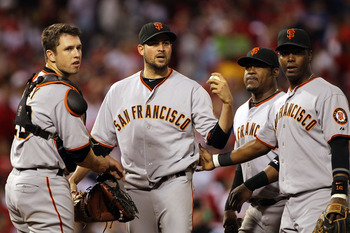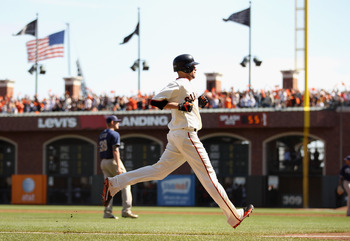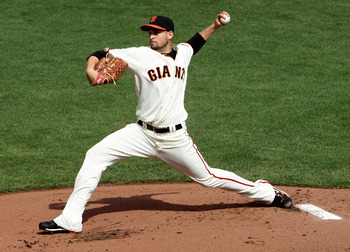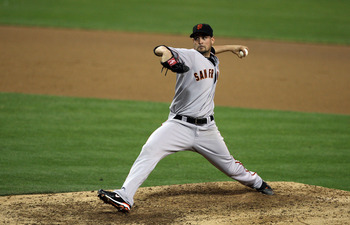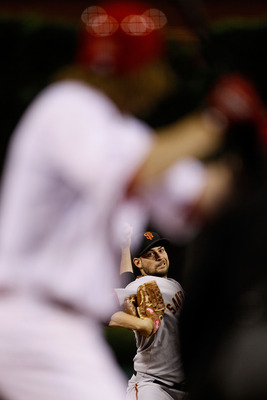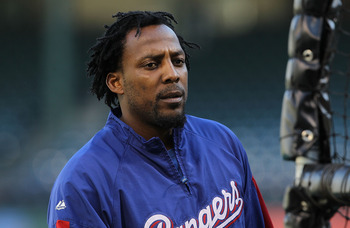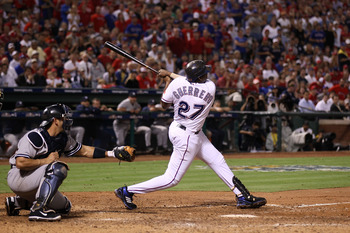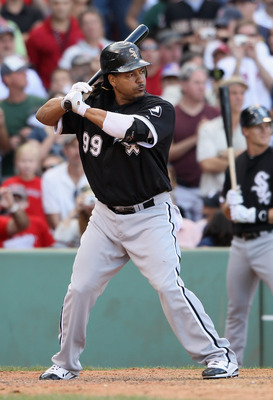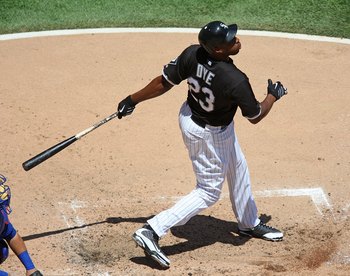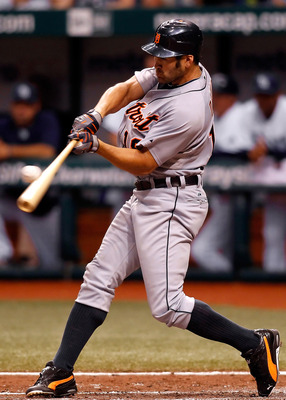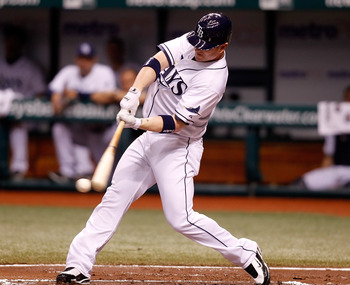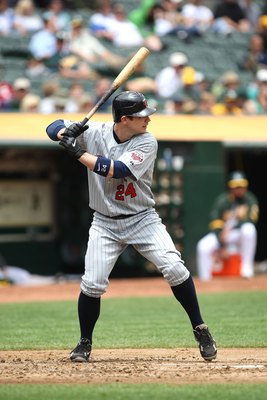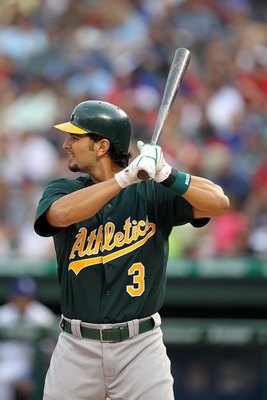One of the hardest things about journalism is that an author puts himself out there, leaving him or her open to harsh criticism. While open criticism is protected by the First Amendment and is an important aspect of our country, sometimes it can seem a bit severe and unfair, especially when the criticizer's reasoning is in sharp disagreement with you. Unfortunately, America likes to always find something wrong with anything, rather than looking at the good.
National baseball writers who must write about other teams are susceptible to this criticism. There are simply too many teams for one person to keep track of on a regular bases. For that to happen, one must spend his or her whole day watching baseball, 15 x 3 (roughly) = 45. Any beat writer knows covering one game daily is a chore, but covering all 15 is unrealistic. This is why thorough research is essential.
Because of this, local fans of a team will be quick to jump on these national writers. In a world full of strict deadlines and limited travel capabilities (for some writers), standard statistics are unfortunately perceived as the only indicator of a player's performance, and the only thing a writer can rely on.
However, I fell into the trap of reading into some of these meaningless statistics -- and I heard it from a well-respected blogger.
Before Mike Petriello, writer for Baseball Prospectus, tore my Bleacher Report article to shreds, I actually thought fielding percentage was a good measure of fielding ability. I could not have been more wrong. While fielding percentage can demonstrate how well a fielder can catch the ball, it does not take into account an important aspect of defense -- range.
He blogged about why the Bleacher Report is a "travesty" and chose to single out my piece -- and with good reason. At first, my opinion was that Petriello and his followers do not understand baseball nor the premise of the Bleacher Report. Then I came to realize this. (Please read the piece below in the previous entry and the comments expressed
here.)
Baseball is a talking sport. It can serve as a forum for debate, which me and Mr. Petriello aimed to accomplish on our blogs. It's America's past time and is a dear sport to the hearts of baseball fans all across the country.
Mr. Petriello has his opinions, and many of them are valid. The fielding percentage was a total brain lapse on my part. It was inexcusable to not realize that first basemen will have a high fielding percentage because of their high put-out rate (they complete plays more than any other position). Looks like I'm going to study UZR.
Mr. Petriello also appeared to claim that my article on bleacher report was full of fantastic, unrealistic ideas, where I "contradict" myself, saying that a bunch of sluggers can be had, but they really cannot because other trade partners would want Billingsley or Kershaw in return.
He's absolutely correct about the sluggers being an unrealistic fit for the Dodgers. Unfortunately, if the Dodgers want to trade to improve their offense, they are going to have to give up something to get a little something. The article is meant to be fantasy, since it is unrealistic the Dodgers will acquire any of the sluggers due to budget constraints and their unwillingness to give up good pitching.
Petriello understands that the article was supposed to be full of "what if" situations because that's the nature of the article. This is what he disagrees with. How will this analysis realistically affect the Dodgers?
Petriello just wants to see content with good journalistic value -- something the readers can actually use. They don't want to read how Jason Bay can help the Dodgers, but yet the Dodgers have no realistic shot at acquiring him. Are there really 10 SLUGGERS who can join the Dodgers? More importantly, has there been any sources who indicated that a slugger is on the way to Chavez Ravine? If not, then my claims will ultimately fail.
Another complaint I got from Petriello was that none of the players I mentioned are really that good anyway. I agree. Nobody really caught my eye. In fact, it was hard to come up with words to portray these players positively, which led to meaningless garb about fielding percentages and moving Loney to the outfield.
Since it is unlikely that the Dodgers would be able to trade for any slugger, I had to go with the sluggers already in free agency (Dye, Guerrero, etc.). They go on to say how Guerrero and Dye are below average defenders, which is true. A list of five-tool players simply do not exist in the current free agent pool. It's a tough situation for me trying to write this article. None of my options would really make sense.
On a separate issue, I was trying to speculate on what to do if James Loney was forced out of first base by a more potent first base bat -- like Prince Fielder. Prince Fielder plays first base only, so what would you do if the Brewers do not want James Loney or if you couldn't trade him?
I'm sure you could release him, but what if the Dodgers want to keep his bat in the lineup? He did have 88 RBIs in 2010. Are RBIs even a meaningful stat when considering a hitter's ability? Some say yes, and some say no. (please vote on this issue at the poll to the left of the blog).
I did a bit of research on my own about the issue. The truth is, after talking to baseball experts, that there is no right or wrong answer. This is where baseball becomes that forum for debate that I mentioned earlier.
I first asked Mychael Urban, a baseball insider for CSNBayArea.com and radio host for KNBR 680, about the RBI issue through twitter. He said that driving in runs is not a stat that should be ignored.
Next, I asked Ken Rosenthal of Fox Sports. He said, "Tough call. There is a real difference of opinion on this. I say yes, stat has some value. But OBP/SLG mean more."
This is where I respectfully disagree with Petriello and agree with Urban (and also Rosenthal to some extent).
I believe it takes some sort of hitting talent to drive in runners, regardless of whose on base or the team .OBP. Anyone who watched the 2009 Giants could clearly see the importance of a consistent RBI producer. Remember how many times that year the Giants would strand runners on third with less than two outs? They could not get any runners in no matter who was on base or no matter how often men were on base, often with golden opportunities to cash in.
James Loney was good at getting those runners in. He was able to take advantage of those situational at-bats, even when an out would produce a run. Unlike most of the 2009 Giants lineup, he had the concentration and hitting ability to get a good pitch to drive to the outfield with runners at third and less than two outs. He could get that RBI hit when it mattered. He could get that RBI ground-out with the infield back.
Sometimes the little things -- the manufactured RBIs - are what wins you ball games. They may not be impressive, but they are just as important. The Giants improved their situational hitting drastically in 2010 and look what happened.
Loney only had 10 home runs, but that does not mean he isn't a competent hitter. In order to get 88 RBIs with such little power, you got to be a smart situational hitter, trading an out for a run if necessary. You got to hit doubles and get those base hits with runners in scoring position.
Loney is a gap-to-gap Mark Grace type hitter. He was fifth in the National League in doubles, with 41, which might be a contributing factor toward the solid RBI total.
Regardless of his little power at a power position, Loney demonstrated enough competence at the plate to deliver quality situational at-bats. Ask someone like Eugenio Velez or Pablo Sandoval (from last season) to do the same thing Loney did, given they have the same chances with runners on base as Loney. I can guarantee you they will not reach 88 RBI's. They would chase too many pitches out of the strike zone and would either strike out or pop the ball up. They just do not have the offensive ability to do what Loney does on a consistent basis.
Going back to moving Loney, I am not saying that the Dodgers should move Loney to the outfield, but if Prince Fielder somehow joins the boys in blue, they would be crazy not to move Loney somewhere else, assuming Loney could not be traded. I speculated right field before because it was the only other position he played at besides first base, albeit, he only played three career games there.
Baseball is full of potential options, "what ifs" so to speak. Some still can't agree if some stats are worthy of merit, but discussing it is what makes baseball so enjoyable.
If you listen to any sports talk radio station, fans will throw out ideas much more outrageous than were outlined on my piece. Some still say that Barry Bonds should come out of retirement, which is silly. Unfortunately, the nature of the article will warrant these "pie in the sky" ideas. I would like to do actual reporting, and I believe I can do an excellent job if the opportunity presents itself.
The Bleacher Report gets 15 million readers per month and is growing. Even if their content is not up to standards of professionals, people read what other fans have to say, and the business model will not change if it's working. Still, Petriello does have a valid point about this issue.
If the Bleacher Report's content reaches out to major partners, such as Fox Sports and CBS Sports, the web site should make sure the content actually makes sense.
I propose that potential writers take an online training course taught by the Bleacher Report, introducing new writers to AP Style, the canons of journalism, how to write good leads, and journalistic etiquette.
However, fans who are less serious and still want their opinion out there should have their own forum on the web site. They would not get the exposure of a writer who took the training course but better quality of work will reach out to baseball fans across the country.
In the end, I am glad that Petriello criticized my work. He means well and just wants quality content out there. More importantly, he wants the hard work of other bloggers who do quality work to shine, just like the Bleacher Report articles do.
While we disagreed in opinion about RBIs, I learned something about fielding percentage and its uselessness in baseball. He might have saved my career. Who knows?
Sometimes you get one shot at impressing people, and one mistake can make or break your career. If I applied for a job and tried to reason that a first baseman's fielding percentage of .995 is better than one with a fielding percentage of .994, I would be shown the door instantaneously.
Lastly, I realize that if my content is going out to the Bleacher Report's partners, I better put my best foot forward and provide relevant, thought-provoking analysis. I owe it to my readers and blog followers. I owe it to baseball fans across the country. I owe it to myself.



